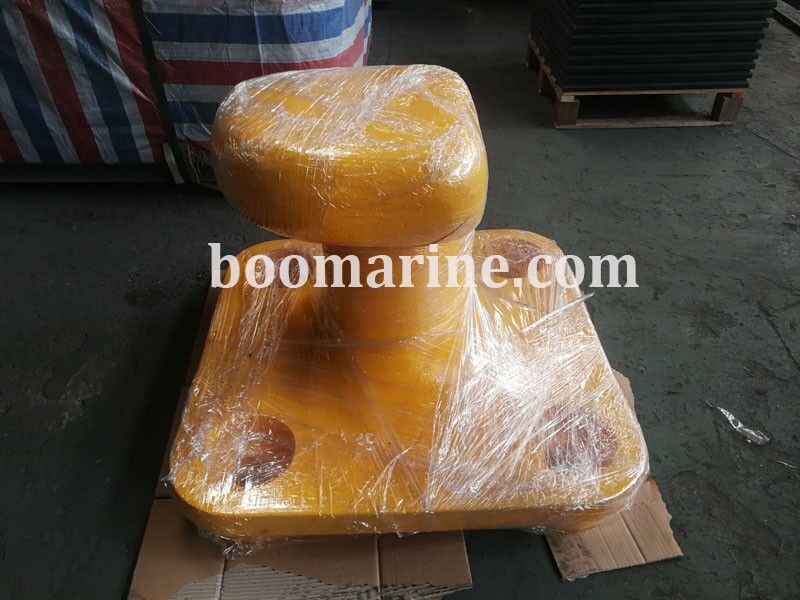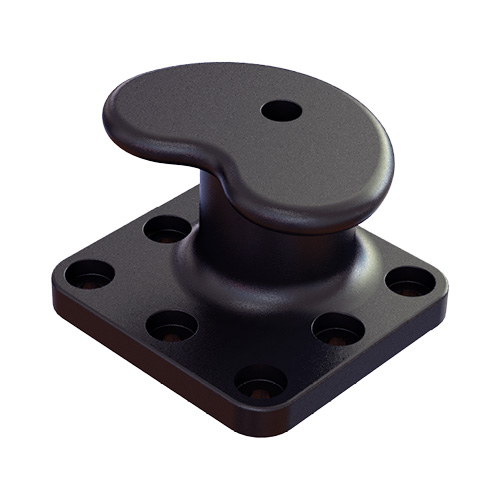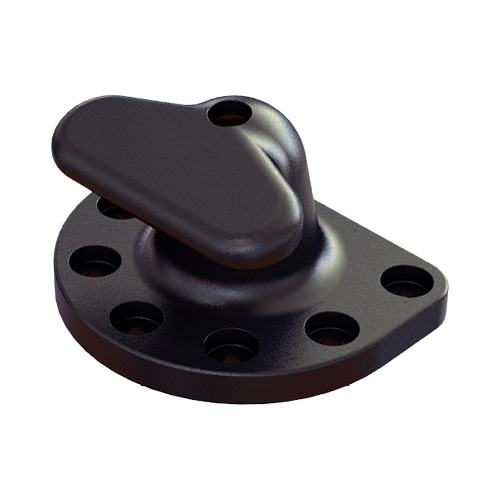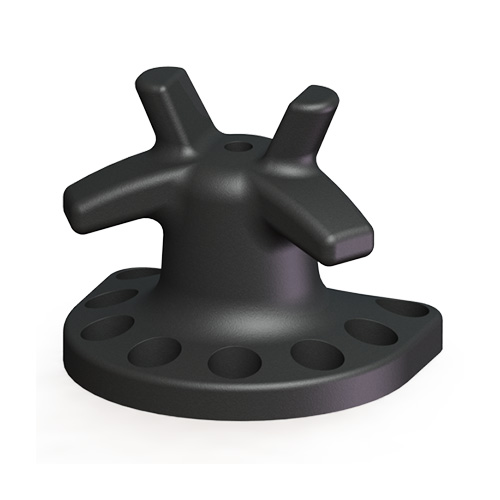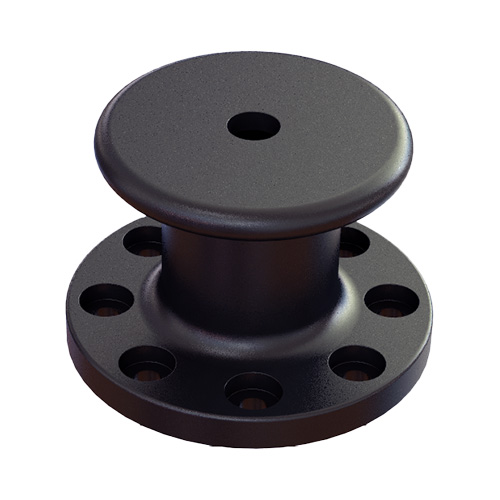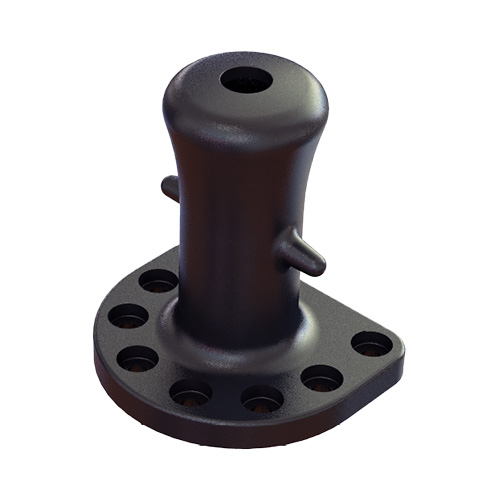Kidney Bollard is an important part of the mooring system, which is one of the most common bollards for jetty, quay and wharf. It is usually a short post on the wharf/quay, used to fix the mooring ropes to hold the ship.
Kidney Bollard is very simple, it is designed with a thicker diameter at the top (head/tip of the structure) to make the mooring rope more difficult to accidentally escape. It is made of ductile cast iron or cast steel, and the surface is sandblasted to Sa2.5, and then completely painted or with anti-rust primer, which can be used in harsh environments. Its mooring line capacity ranges from 10 tons to 200 tons, covering various mooring line capacity requirements from small ports to large bulk cargo handling terminals.
Kidney Bollard is particularly suitable for applications where tidal ranges are small, and is a popular choice for warping operations along quay-sides. We particularly recommend a vertical mooring angle of 0º to 40º for this type of bollard, although it can be used between -15º and 60º. For horizontal mooring, it works best at 180º. The wide size range makes it an ideal choice for small ship berths and large bulk cargo terminals.
As a professional marine equipment supplier in China, Boomarine can design and produce mooring bollards according to your requested drawings and technical requirements. All our bollards are provided with a warranty of at least 18 months. Usually, our bollards have a life span of 15 to 20 years. If you are looking for any mooring bollards, Boomarine will be your best choice.
Features of Kidney Bollard
- Long service life of up to 20 years.
- Durable design and good corrosion resistance.
- Ductile cast iron and cast steel materials are suitable for extreme weather.
- Mooring purpose applications up to 200 tons.
- Perfect for multi-use berths.
- Special designs are available upon request.
- The cost-effective, simple design and ease of use make it an economical solution for securing ships through mooring rope winding methods.
Applications of Kidney Bollard
- Small ship berth
- Large bulk cargo terminal
- Oil & Gas terminals
- Commercial jetty
- Container & Fishing wharfs
Difference Between Ductile Cast Iron & Cast Steel
Ductile cast iron and cast steel are the most commonly used materials for kidney bollards. Both can be used in various applications.
| Ductile Cast Iron | Cast Steel | |||||
| Properties | Quality | Equivalent standards | Quality | Equivalent Standards | ||
|
GB/T1348-2009 QT450-10 |
ISO 450-10 |
ASTM 65-45-12 |
GB/T11352 ZG230-450 |
ISO 23-450W |
ASTM 65-35 |
|
| Yield Strength | ≥310 Mpa | ≥310 Mpa | ≥31 Mpa | ≥230 Mpa | ≥230 Mpa | ≥240 Mpa |
| Tensile Strength | ≥450 Mpa | ≥450 Mpa | ≥448 Mpa | ≥450 Mpa | ≥450 Mpa | ≥450 Mpa |
| Elongation | ≥10% | ≥10% | ≥12% | ≥22% | ≥22% | ≥24% |
Parameters of Kidney Bollard:
| Type | Capacity (ton) | Bolts |
| BMS-K15 | 15 | 4xM24 |
| BMS-K30 | 30 | 4xM30 |
| BMS-K50 | 50 | 4xM36 |
| BMS-K80 | 80 | 5xM42 |
| BMS-K100 | 100 | 7xM42 |
| BMS-K125 | 125 | 7xM48 |
| BMS-K150 | 150 | 7xM48 |
| BMS-K200 | 200 | 7xM56 |
* Specific size designed according to requirements
